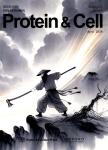The creation of synthetic crystalline bovine insulin
The creation of synthetic crystalline bovine insulin作者机构:CAS Key Laboratory of Pathogenic Microbiology and Immunology Institute of Microbiology Chinese Academy of SciencesBeijing 100101 China
出 版 物:《Protein & Cell》 (蛋白质与细胞(英文版))
年 卷 期:2015年第6卷第11期
页 面:781-783页
核心收录:
学科分类:0710[理学-生物学] 0831[工学-生物医学工程(可授工学、理学、医学学位)] 1007[医学-药学(可授医学、理学学位)] 06[历史学] 1002[医学-临床医学] 060207[历史学-专门史] 08[工学] 0703[理学-化学] 0836[工学-生物工程] 0602[历史学-中国史]
主 题:Disulfide Bond Nobel Prize Shanghai Institute Full Activity Bovine Insulin
摘 要:Fifty years ago, a great achievement in life science occurred in China--the complete synthesis of crystalline bovine insulin--which gave Chinese scientists a sense of great elation and pride. Insulin (Fig. 1) is a hormone secreted by 13 cells in pancreas. Before the clinical application of insulin, diabetes was a feared disease that commonly led to death. Insulin has been studied since 1868 when Paul Langerhans, a medical student in Berlin found clusters of cells in the pancreas (Langerhans, 1868). These were later called "Islets of Langerhans". Some of these cells were eventually shown to produce insulin. The term "insulin" origins from "lnsel", the German word for "islet" or "small island" (Sakula, 1988). Frederick Grant Banting, a young Canadian physician first extracted insulin from the pancreas of a dog whose pancreatic duct had been surgically ligated at University of Toronto in 1921, with the experimental facilities provided by Prof. John James Rickard Macleod and the assistance of one of Macleod's students, Charles H. Best. Biochemist James Bertram Collip helped purify the extract. For this work Banting and Macleod shared the 1923 Nobel Prize in Physiology or Medicine (***, 2014).



